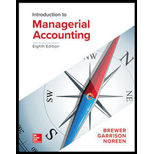
It is an activity ratio which determines a company’s efficiency in collecting their receivables on yearly basis. It is computed by dividing the credit sales and the average accounts receivable during given period of time.
Average Collection Period:
The period during which a company is able to collect from its accounts receivables is called an average collection period. It is computed by dividing the accounts receivable turnover ratio by the number of days during the year.
Inventory Turnover:
It is an efficiency ratio which measures how effective a company has been in selling its inventory during particular time.
Average Sale Period:
It is a ratio which measures the period of time taken by a company to sell its inventory. It is computed by dividing the number of days in a year with average inventory during a given period.
Operating Cycle:
It is an average period within which a company is able to turn its cash incurred on the production of goods into cash collected from the customer as sales revenue.
Total Asset Turnover:
The ratio which indicates a company’s efficiency in generating sales from its assets. It is calculated by dividing the net sales with the average total assets of the company.
: Compute the following financial data for this year:
1. Accounts Receivable Turnover
2. Average Collection Period.
3. Inventory Turnover
4. Average Sale Period
5. Operating Cycle
6. Total Asset Turnover
Explanation of Solution
1. Computation of Accounts Receivable turnover
2. Computation of Average Collection Period
3. Computation of Inventory Turnover
4. Computation of Average Sale Period
5. Computation of Operating Cycle
6. Computation of Total Assets Turnover Ratio
Want to see more full solutions like this?
Chapter 14 Solutions
Introduction To Managerial Accounting
- I need help with this general accounting question using the proper accounting approach.arrow_forwardIs the estimated variable delivery cost component per shipment? General accountingarrow_forwardClark Company manufactures a product with a standard direct labor cost of two hours at $16.87 per hour. During July, 2,232 units were produced using 4,267 hours at $15.96 per hour. What is the labor quantity variance?arrow_forward
- Can you help me solve this general accounting question using the correct accounting procedures?arrow_forwardA local bakery sells 12,000 loaves of sourdough bread each year. The loaves are ordered from an outside supplier, and it takes 4 days for each shipment of loaves to arrive. Ordering costs are estimated at $18 per order. Carrying costs are $6 per loaf per year. Assume that the bakery is open 300 days a year. What is the maximum inventory of loaves held in a given ordering cycle? Provide Answerarrow_forwardHello tutor solve this question and accounting questionarrow_forward
- Please provide the answer to this general accounting question using the right approach.arrow_forwardFalcon Manufacturing, which uses the high-low method, reported total costs of $12.80 per unit at its lowest production level of 5,000 units. When production tripled to its highest level, the total cost per unit dropped to $7.90. Falcon Manufacturing would estimate its variable cost per unit as:arrow_forwardI am trying to find the accurate solution to this general accounting problem with the correct explanation.arrow_forward
 Managerial Accounting: The Cornerstone of Busines...AccountingISBN:9781337115773Author:Maryanne M. Mowen, Don R. Hansen, Dan L. HeitgerPublisher:Cengage Learning
Managerial Accounting: The Cornerstone of Busines...AccountingISBN:9781337115773Author:Maryanne M. Mowen, Don R. Hansen, Dan L. HeitgerPublisher:Cengage Learning Cornerstones of Financial AccountingAccountingISBN:9781337690881Author:Jay Rich, Jeff JonesPublisher:Cengage Learning
Cornerstones of Financial AccountingAccountingISBN:9781337690881Author:Jay Rich, Jeff JonesPublisher:Cengage Learning Managerial AccountingAccountingISBN:9781337912020Author:Carl Warren, Ph.d. Cma William B. TaylerPublisher:South-Western College Pub
Managerial AccountingAccountingISBN:9781337912020Author:Carl Warren, Ph.d. Cma William B. TaylerPublisher:South-Western College Pub College Accounting, Chapters 1-27AccountingISBN:9781337794756Author:HEINTZ, James A.Publisher:Cengage Learning,
College Accounting, Chapters 1-27AccountingISBN:9781337794756Author:HEINTZ, James A.Publisher:Cengage Learning, College Accounting, Chapters 1-27 (New in Account...AccountingISBN:9781305666160Author:James A. Heintz, Robert W. ParryPublisher:Cengage Learning
College Accounting, Chapters 1-27 (New in Account...AccountingISBN:9781305666160Author:James A. Heintz, Robert W. ParryPublisher:Cengage Learning




